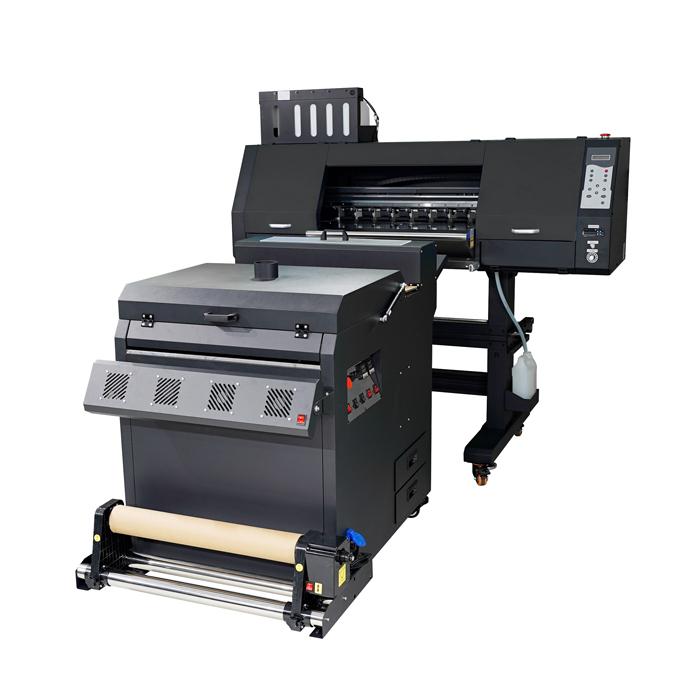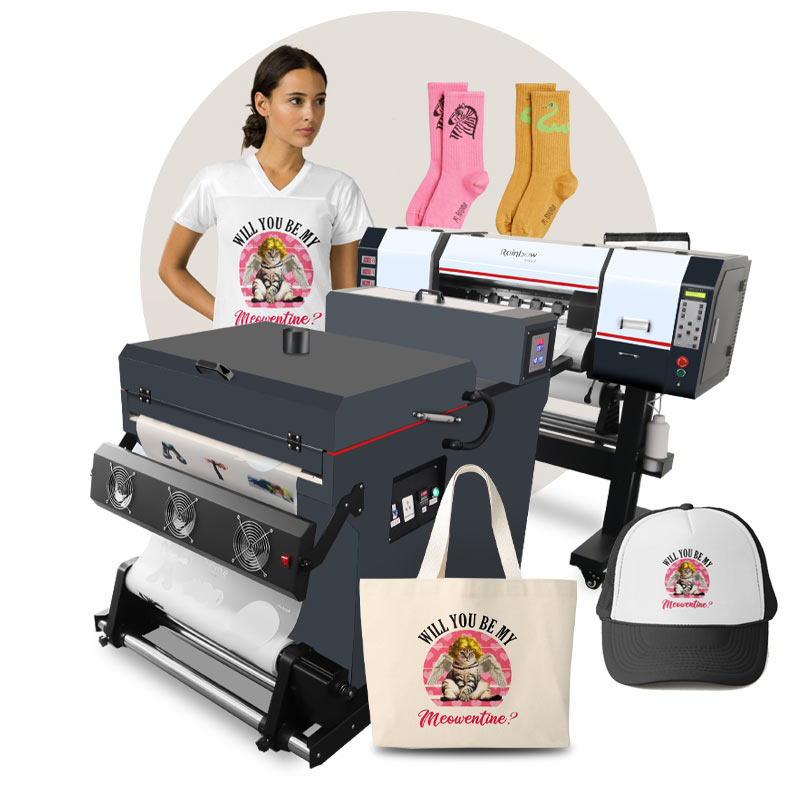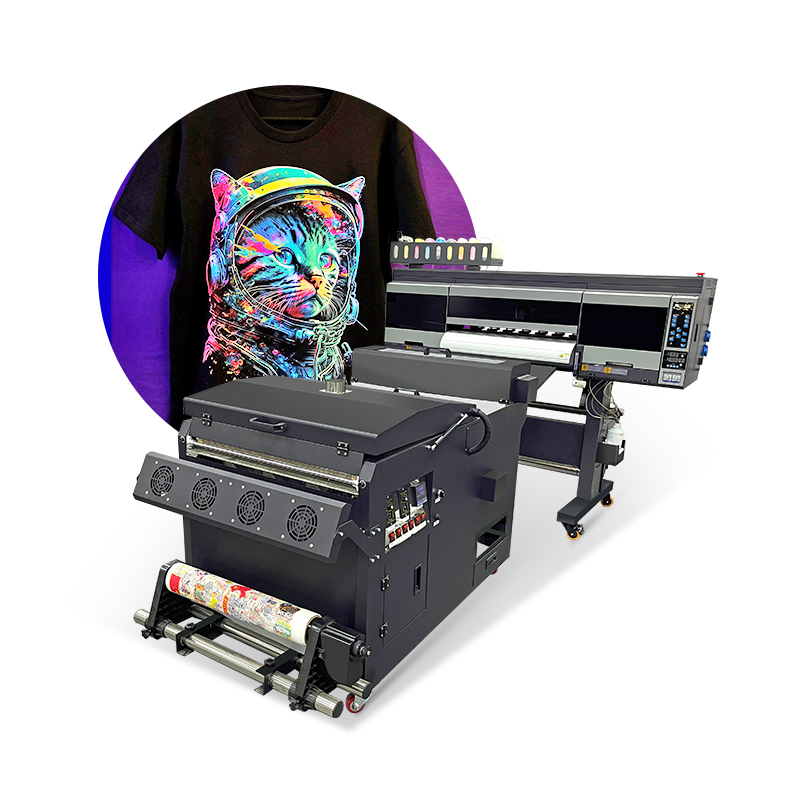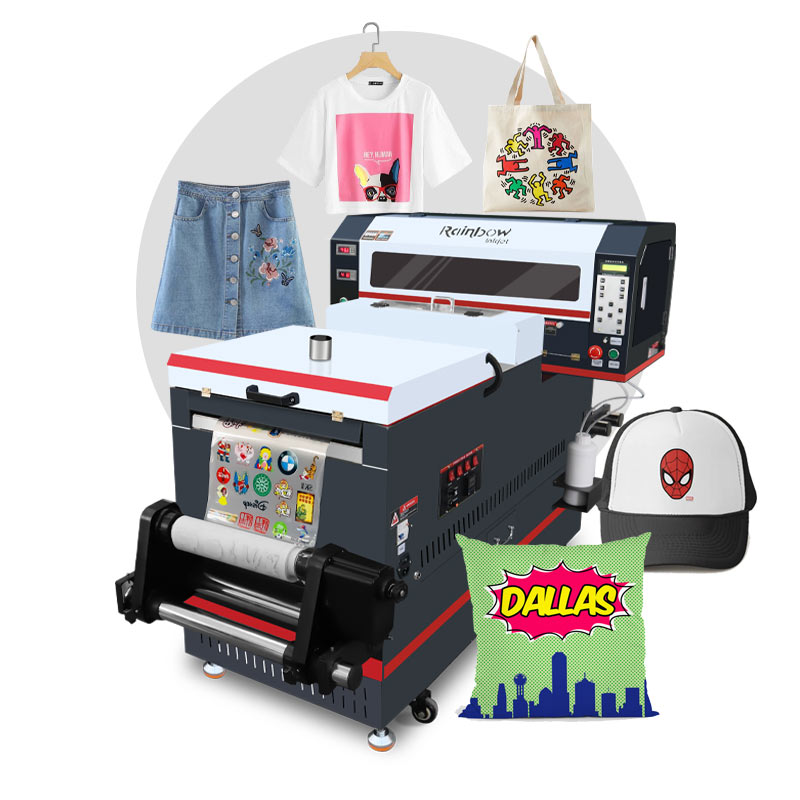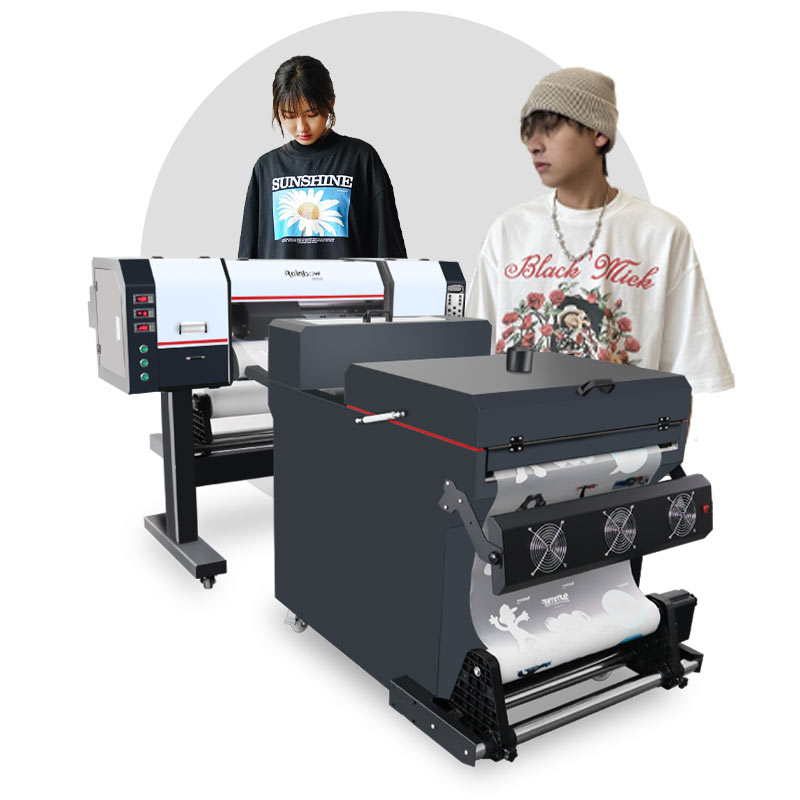Introduction
DTF printing, or Direct-to-Film printing, has revolutionized the world of custom printing and garment decoration. It allows for vibrant and durable prints on various fabrics. As the demand for personalized apparel continues to grow, DTF printers have become increasingly popular among businesses and hobbyists alike. This article will delve deep into the workings of DTF printers, their benefits, and how they compare to other printing methods.
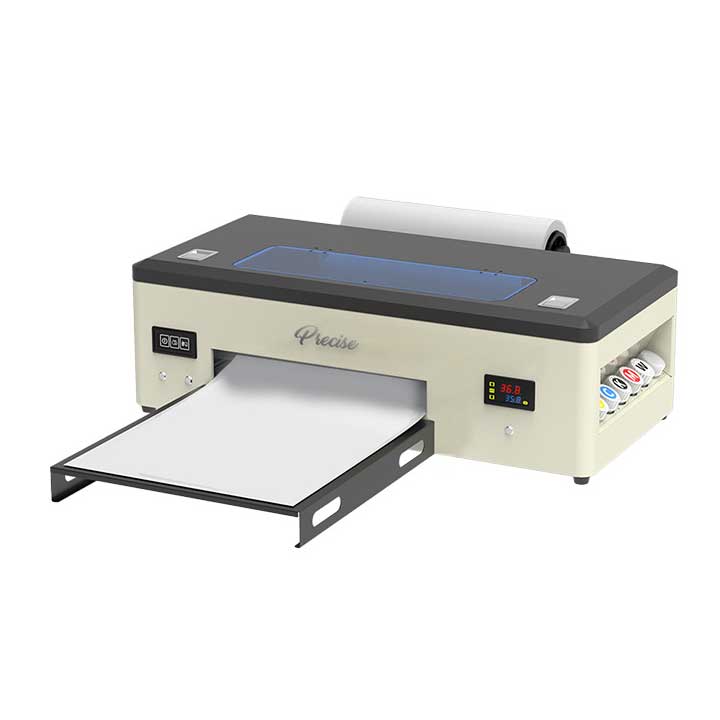
What is a DTF Printer?
The Basics of DTF Printing
A DTF printer employs a unique process to create high-quality designs on film that can be transferred to fabric. First, the printer prints the design onto a special transfer film. It uses a water-based ink that is rich in pigments, ensuring bright colors and precision. After the design is printed, a layer of adhesive powder is applied to the print while it is still wet. This adhesive is crucial as it allows the ink to adhere to the fabric once the transfer is made.
Once the adhesive is applied, the film is cured using heat. This curing process solidifies the adhesive and prepares the film for the transfer. When you place the film on the desired fabric, you use heat and pressure to transfer the design onto the material. The result is a vibrant, durable print that can withstand various washing conditions.
The Difference from Other Printing Methods
To understand the significance of DTF printers, it is important to compare them with other methods. Traditional methods like screen printing can be more labor-intensive and require multiple steps for different colors. In contrast, DTF printing allows for full-color designs to be printed in a single pass.
Additionally, DTF printing can be done on a wider range of fabrics, including cotton, polyester, and blends. This flexibility makes it a more attractive option for many entrepreneurs who want to diversify their offerings. Unlike sublimation printing, which requires polyester surfaces, DTF printing can be used on dark fabrics without compromising the print’s quality.
Benefits of DTF Printing
Quality and Durability
One of the main advantages of DTF printing is the quality it offers. The colors produced are vibrant and eye-catching. The process also ensures that finer details are maintained. This means that intricate designs, logos, or images come out sharply without any blur.
Durability is another key benefit. DTF prints can withstand multiple washes without fading. When properly cured and transferred, the prints resist cracking and peeling. Users can enjoy their garments for an extended time, which translates into satisfied customers.
Cost-Effectiveness
For small businesses or individuals looking to start a printing venture, DTF printing can be cost-effective. The initial investment in a DTF printer may seem high, but the long-term return on investment is favorable. You save money by not needing to buy different inks for various colors.
Furthermore, DTF printing requires less setup and less screen preparation compared to traditional methods. You can quickly switch designs, allowing for shorter production times. This efficiency can lead to higher profits, especially during peak orders. Overall, businesses can leverage DTF printing to lower operational costs.
The DTF Printing Process
Preparing the Printer
Before printing, users must prepare the DTF printer. This involves ensuring that it is clean and that the ink reservoirs are filled with the appropriate colors. Regular maintenance is crucial for consistent performance. Check the print heads regularly to prevent clogs, as this can affect the quality of the prints.
Ensure that the transfer film is compatible with the printer. The thickness and type of film can impact the print quality and transfer success. Always follow manufacturer guidelines for optimal results. Once the printer is ready, it’s time to create your design using graphic design software.
Printing and Transfer
Once the design is ready, send it to the DTF printer. The printer uses precision to lay down the colors accurately. After the print is complete, apply the adhesive powder while the ink is still wet. Ensure even coverage of the powder, as this directly affects the transfer quality.
The next step involves curing the film. Use a heat press to solidify the adhesive. This step is crucial; if the adhesive isn’t cured properly, the design may not stick well to the fabric. After curing, the film can be placed on the fabric, followed by a similar heat press application for the transfer.
Finalizing the Print
Once applied, allow the print to cool before removing the film. Check the transfer to ensure that it has adhered correctly. A successful transfer will have a clean, vibrant image that aligns with your original design. If any parts of the print did not adhere well, it might require a touch-up or a redo.
Quality checks are important. Inspect each garment for defects, ensuring consistency. Improving your skills in this final phase can lead to better results over time. Engaging customers with high-quality products will foster loyalty and repeat business.
Applications of DTF Printers
Custom Apparel
One of the most popular applications of DTF printers is in custom apparel production. Whether it’s for t-shirts, hoodies, or hats, the versatility of DTF printing allows businesses to create unique designs for their customers. This customization trend is not just a fad; it has become a staple in the retail sector. Consumers enjoy wearing apparel that reflects their personalities or beliefs, and DTF printers make this possible.
You can produce a wide range of designs, making it easy to cater to niche markets. For example, you can create designs for sports teams, local events, or personalized gifts. The ease of printing multiple colors in one run means you can create more complex designs without added costs.
Promotional Products
DTF printers are also ideal for producing promotional products. Businesses often require branded items to distribute at events or to give as gifts. Custom printed bags, shirts, and hats create a lasting impression. DTF printing’s detailed output ensures that logos and slogans pop, making them effective marketing tools.
The ability to print on various materials means you can diversify your offerings. Innovate by creating limited-edition items or seasonal products. This strategy allows you to engage with your audience actively, keeping your brand fresh in their minds.
Challenges in DTF Printing
Technical Issues
Despite its many advantages, DTF printing is not without challenges. Technical issues can arise, especially for newcomers. Clogged nozzles or inconsistent ink flow can lead to poor-quality prints. Thankfully, with proper maintenance and care, these problems can often be avoided.
Understanding your printer’s settings is also vital. Spend time reading the manual and familiarizing yourself with the machine’s features. Each printer may have its nuances, and mastering these nuances can lead to significantly better results.
Material Constraints
While DTF printing is versatile, it does have its limitations concerning fabric types. Some materials may not react well to the DTF process, resulting in inferior quality. For example, fabrics with a high silicone content might not hold the ink and adhesive effectively.
It is essential to test various materials before full-scale production. Keep records of what works and what doesn’t for future reference. Your experience will guide you in choosing the right fabrics for your projects.
Future of DTF Printing
Emerging Trends
As technology progresses, we can expect many exciting developments in the world of DTF printing. Innovations in ink formulations may lead to even more vibrant colors and improved durability. Research is ongoing to make inks that are more environmentally friendly, catering to the increasing consumer demand for sustainable products.
Furthermore, the introduction of automation in the printing process could streamline operations. Automated systems can reduce human errors and speed up production. Companies investing in automation may find themselves with a competitive edge as efficiency becomes even more critical in a fast-paced market.
Expanding Industries
More industries are likely to adopt DTF printing techniques in the coming years. Beyond apparel, sectors like home decor, custom packaging, and merchandise are realizing the benefits of this technology. Businesses in these sectors can use DTF printers to expand their offerings and appeal to their audiences effectively.
The possibilities are vast. Custom printed fabrics for upholstery or window treatments could see new heights of design possibilities thanks to DTF technology. Such diversifications point towards an exciting future for DTF printers.
Getting Started with DTF Printing
Equipment and Supplies
To begin with DTF printing, you’ll need specific equipment. The primary piece of equipment is, of course, the DTF printer. Choose a printer that fits your budget and output needs. Research various models to determine which one aligns with your goals.
Along with the printer, you’ll need transfer films, adhesive powder, and heat presses. All these components work together to ensure a successful printing process. Investing in quality supplies will yield better results. Don’t shy away from spending a little extra for higher-quality materials—they often pay off in the long run.
Learning Curve
There will be a learning curve when you start DTF printing. Familiarize yourself with graphic design software to create stunning designs. Online tutorials and courses can be beneficial. Engage with communities and forums dedicated to DTF printing; they can offer valuable insights and tips.
Practice is key. Start with smaller projects to hone your skills before moving on to larger jobs. The more you work with your set-up, the more comfortable you’ll become. Confidence will grow as you learn what works best for you.
Conclusion
DTF printing represents a significant advancement in the printing industry. As a versatile, efficient, and cost-effective method of transferring designs onto fabrics, it has quickly gained popularity among businesses and individuals alike. With vibrant colors and outstanding durability, DTF prints meet the diverse needs of the market.
Despite its challenges, knowledge and practice can overcome many obstacles. As the technology evolves, the future of DTF printers looks promising. The impact of this innovative printing technique will likely continue to shape the landscape of custom printing for years to come. Whether you’re a business owner, a hobbyist, or simply someone curious about this technology, DTF printing offers exciting possibilities that are worth exploring.
